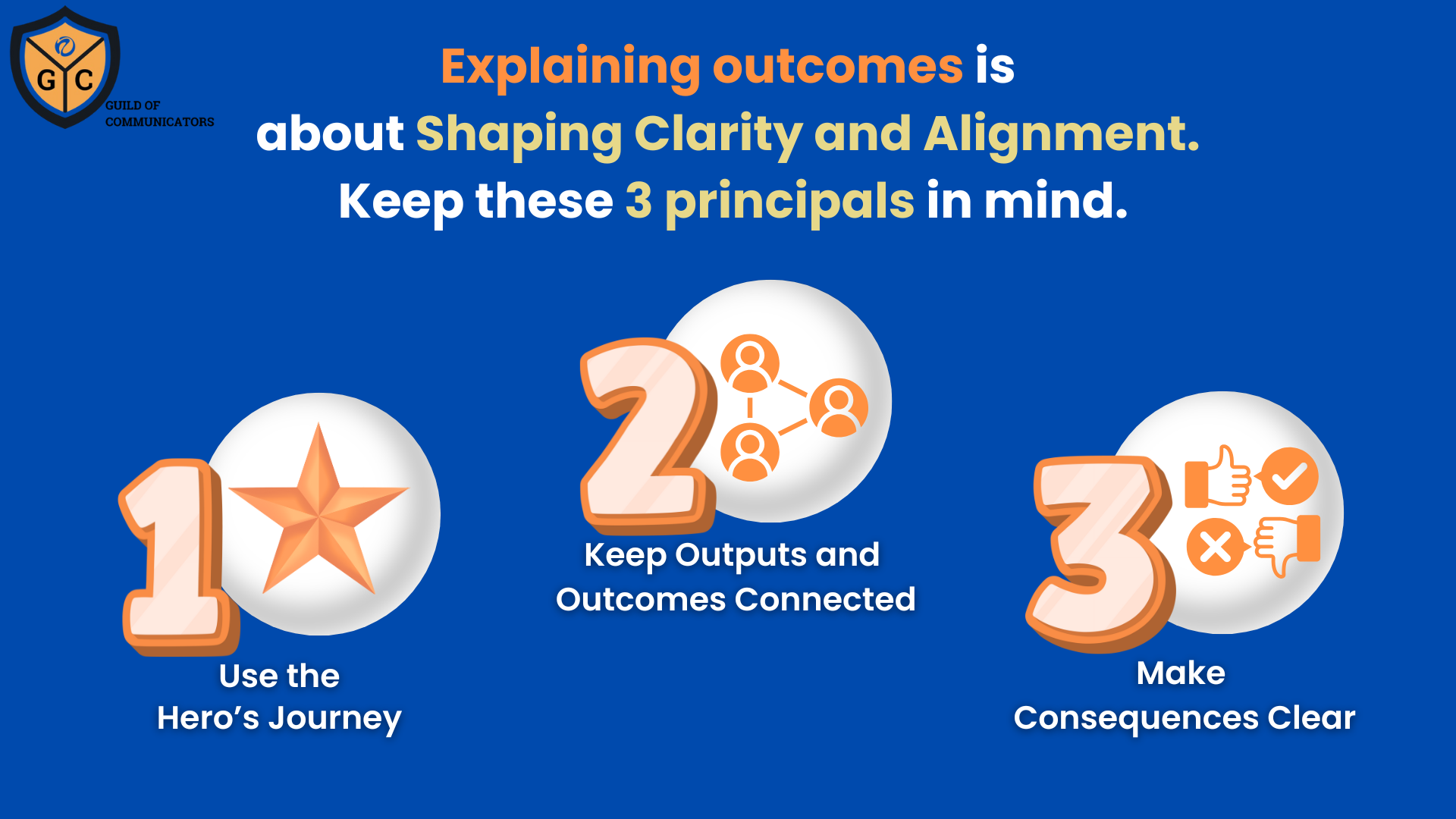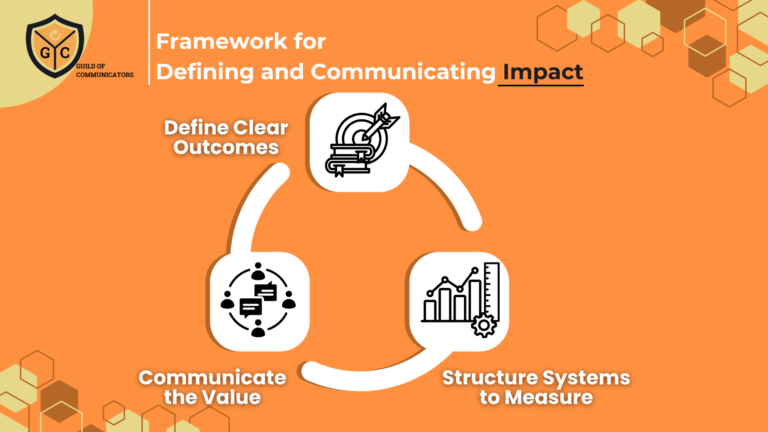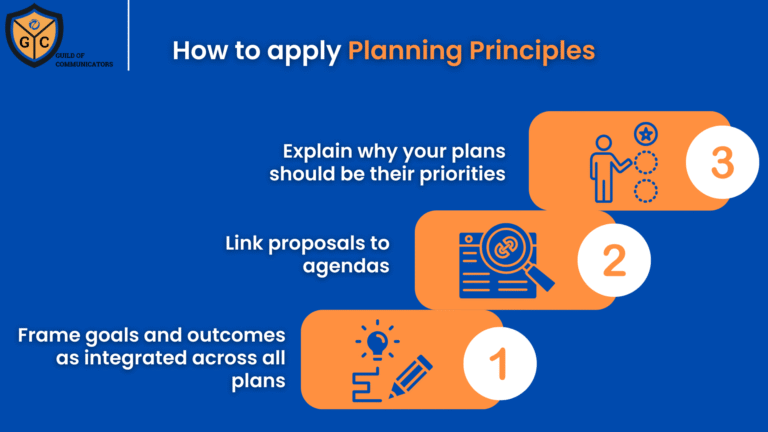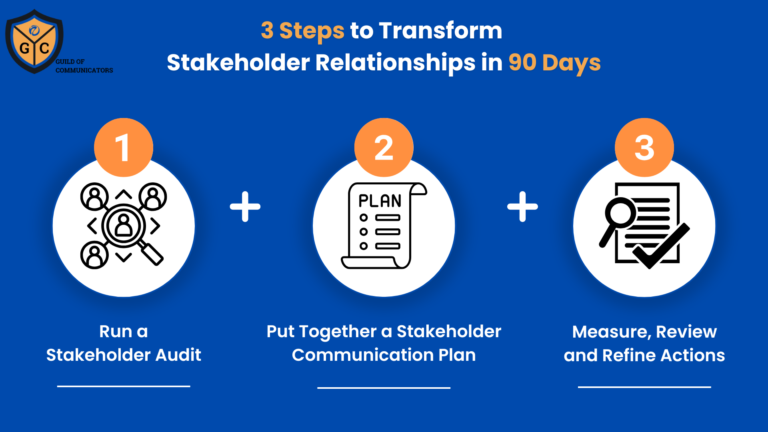Communicators are often expected to show results—but the skill of explaining outcomes is not the same as measuring them. Yet in many communications workflows, these two distinct actions are mistakenly combined or used interchangeably. This can lead to confusion about what success looks like and how it should be understood by decision-makers.
Measurement answers whether something worked. Explanation goes further. It accounts for context, signals direction, and shapes understanding across the organisation. In executive communications, the ability to explain outcomes is critical not only to inform leadership, but also to guide next steps—internally and externally.
To do this well, communicators need to build clarity on how explanation works, what stakeholders need, and how to support executive decision-making with the right narrative.
What is Measurement when it pertains to Executive Communication
Measurement focuses on whether communications activity has produced a shift in audience behaviour, engagement, or sentiment. In executive communications, this often includes:
- Whether target audiences changed their perception of the executive or organisation
- How key messages were picked up, repeated, or referenced in the public domain
- The level of response from priority stakeholders, such as policy actors, investors, or internal teams
These data points help assess the effectiveness of specific tactics and campaigns. But measurement alone does not explain why something happened or how it contributes to broader outcomes.
Communicators often stop at reporting metrics. However, in executive communications, that is only part of the role. Being able to explain outcomes in a way that aligns with the executive’s perspective, priorities, and accountability is what supports influence, trust, and momentum.
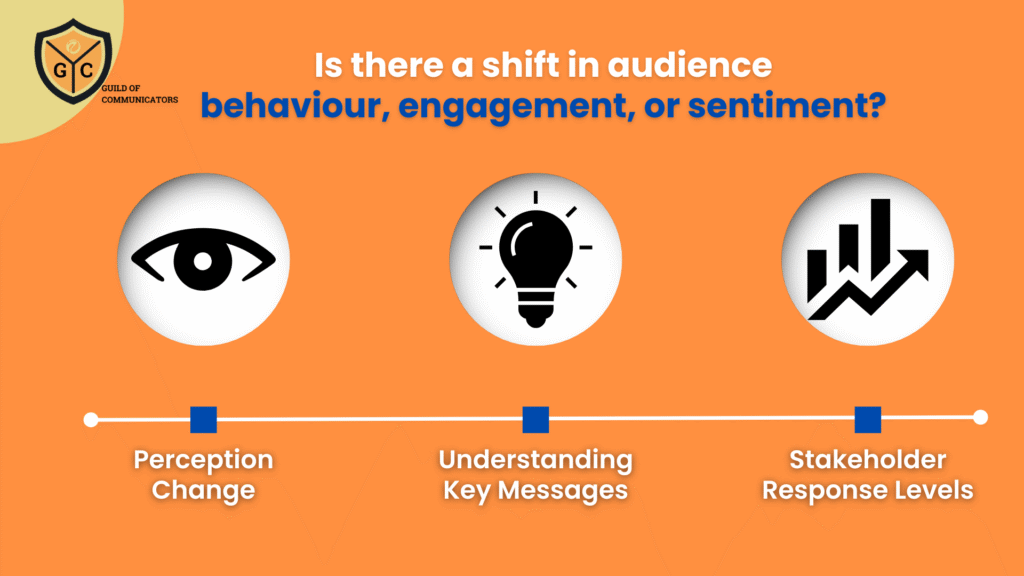
Explaining Outcomes Depends on the Stakeholder
The explanation of outcomes changes depending on who you’re speaking to—and for what purpose.
A successful communicator adjusts the depth, framing, and implications based on whether they’re reporting to:
- The Executive: They are not just asking “what did we do?” but “what does this mean for what I need to do next?” They need clarity on impact and alignment with their leadership role.
- The Organisation: The focus is broader—what are the organisational risks, momentum, and opportunities created by the outcome? How do the results support business or policy goals?
- External Audiences: These might include the board, investors, media, or government stakeholders. Each requires a version of the outcome that reflects credibility, reliability, and strategic direction.
What matters is not just the data point or message delivered—but how it is linked to the bigger picture, how clearly it presents the consequences, and how it supports forward planning or risk response.
There are Three Purposes for Explaining Outcomes
Executive communications outcomes can be explained through different lenses, depending on the underlying purpose. Each purpose calls for a distinct way of framing:
1. Internal Alignment
The outcome is used to clarify the direction for teams and align internal understanding. This may include showing how external signals validate internal strategy, or how results suggest the need for operational shifts. The explanation connects communication outcomes to shared business priorities.
2. Reputation Building
Here, the outcome is used to strengthen the credibility of the executive or organisation. Explaining the outcome involves showing how the communication influenced opinion leaders, built trust with target communities, or advanced strategic visibility. The focus is on long-term positioning and influence.
3. Risk Mitigation
When results point to issues, delays, or missed expectations, the explanation must address what happened, why it happened, and how the organisation is responding. This type of explanation protects trust while managing future implications. It should demonstrate situational awareness and a proactive stance.
Recognising the intended purpose of an outcome explanation is crucial. It shapes the level of detail, the type of language used, and the forward-looking framing expected by stakeholders.
How Psychology Shapes Outcome Perception
Understanding how people make sense of outcomes helps communicators explain them more effectively. Two cognitive tendencies are especially relevant in executive communications.
Attribution Bias refers to the tendency to attribute outcomes to individual actions rather than external context. For example, if a campaign succeeds, observers may credit the executive’s charisma rather than the team’s strategic effort. If it fails, blame may fall on the communicator instead of market conditions. Good explanation highlights both internal and external factors—balancing accountability with realism.
Gestalt Thinking is the inclination to perceive events as part of a larger whole. Stakeholders may unconsciously interpret isolated outcomes as signs of broader success or failure. For example, one negative headline might be seen as part of a “pattern,” even when it’s not. Communicators must help contextualise outcomes, showing how they fit within longer timelines and strategic intent.
By anticipating these tendencies, communicators can shape explanations that reduce misinterpretation, build trust, and support thoughtful decision-making.
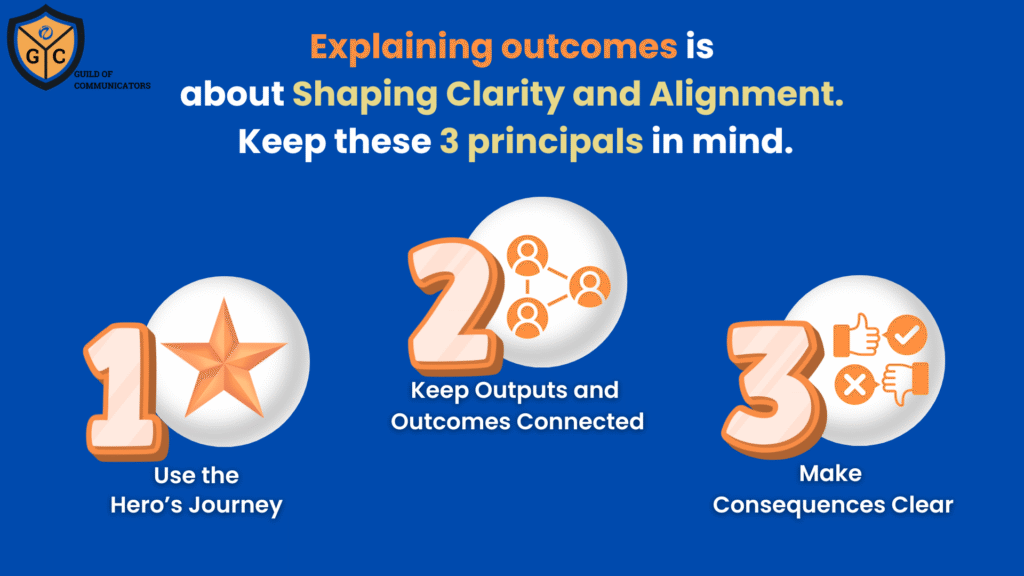
Three Guidelines for Explaining Outcomes
Explaining outcomes is about shaping clarity and alignment. When communicators frame outcomes in ways that match the concerns and priorities of stakeholders, they contribute to better alignment between communication and organisational direction.
This positioning matters more than ever in high-stakes environments where communication can shape both internal confidence and external reputation.
When done well, this process does three things:
- Supports the executive’s ability to act with confidence and foresight.
- Helps the organisation learn, adapt, and move forward.
- Ensures external stakeholders interpret results in ways that support trust and credibility.
To communicate outcomes effectively in executive contexts, keep these three principles in mind:
1. Use the Hero’s Journey
Structure explanations like a simple story. Set up the goal, the challenge, the actions taken, and the result. This format helps stakeholders follow the logic, understand the contribution, and stay engaged.
2. Keep Outputs and Outcomes Connected
Don’t isolate the result from the actions that led to it. Explain how specific communication activities contributed to shifts in behaviour, perception, or engagement—even if the pathway was indirect or had mixed results.
3. Make Consequences Clear
Every outcome should lead to something. Whether it’s reinforcing a message, revising a strategy, or engaging a new audience, the communicator’s role is to show how this outcome helps move the executive or organisation forward.
The ability to explain outcomes clearly, appropriately, and with contextual awareness will help communicators earn credibility and access.
Over time, it enables communicators to speak the language of leadership, where the journey shifts beyond ‘just delivering’ the work, but into guiding its relevance, timing, and influence. That’s how communicators grow into strategic advisors.
*****
Ready to elevate your communications career? The Guild of Communicators is your essential hub for professional growth, offering a vibrant community and best-in-class resources.
- Connect Membership: Ideal for early-career communicators seeking a supportive peer network, over 300 foundational and intermediate courses, and monthly interactive group sessions.
- Elevate Membership: For ambitious professionals, this tier includes premium frameworks, immersive live online workshops, dedicated career coaching, and mentorship with senior industry leaders.
Discover your path to impact and accelerated career growth.
Join the Guild of Communicators today at www.gocommunicators.com.
(For students: If you’re a student, undergraduate or postgraduate, explore our special student referral programme to lock in your membership fee for the second year! Drop us an email to find out more)
Subscribe to join over 1500+ communicators and brands getting value every Tuesday while reading A Communicator’s Perspective, our weekly newsletter.

